While the saxophone has been around for a while, it is still one of the youngest wind instruments in the family. It’s also one of the more complicated designs of all woodwind instruments and know what part does what can be a bit confusing on first glance.
In this article, we’re going to give you a quick guide to the different parts of a saxophone and explain what each part does and why it’s important.
The Anatomy of a Saxophone
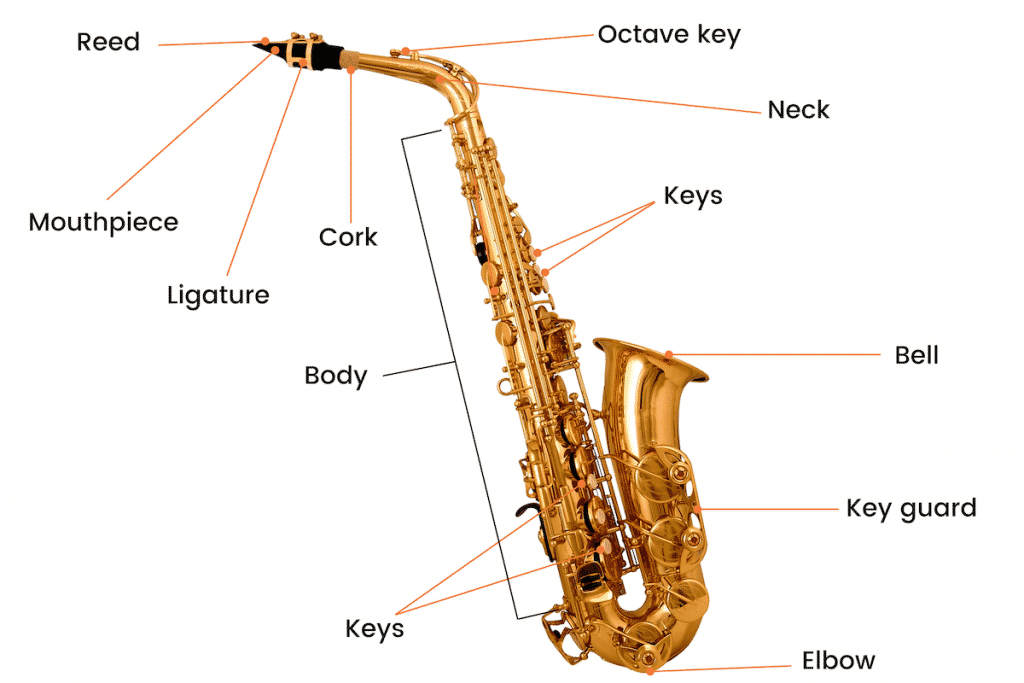
If you’re learning how to play the saxophone it helps to have a good idea of the different parts and its basic design.
Most types of saxophones are broken down into three different sections:
- the mouthpiece
- the neck
- the body
In this post we’ll be looking at the anatomy of the alto and tenor saxophones which are very similar, but the other saxes in the family follow this basic design with some alterations.
The Mouthpiece
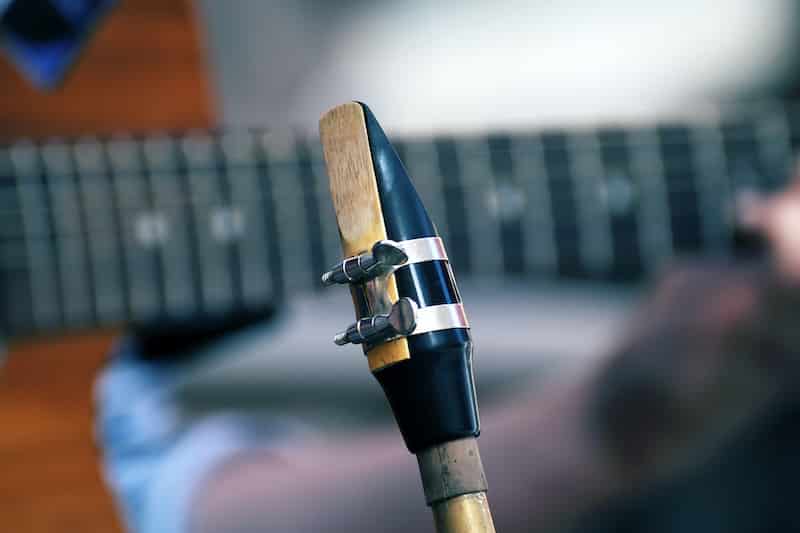
The first piece we’ll look at is the Mouthpiece which is one of the most important parts of the saxophone when it comes to tone quality.
It’s the part of the horn that goes in the musicians mouth, so it’s where the sound is first generated by blowing into it.
The most common type of material for saxophone mouthpieces is a hard rubber but you’ll also find them made out of metal, plastic, wood and even glass or crystal!
As you can probably guess, metal mouthpieces are louder and brighter than their hard rubber counterparts.
But there are also a lot of other factors that determine the type of sound a mouthpiece will generate.
You have the Tip Opening which is the space between the reed and the edge of the mouthpiece.
A wider tip opening generally creates a brighter and more brash sound quality.
Then you have the Chamber which is the negative space inside the mouthpiece and comes in a lot of different sizes and each one has a different effect on the sound.
Lastly you have the Baffle which is a ledge on the upper part of the inside of the mouthpiece.
Again, the baffle can come in lots of different geometric shapes with each one changing the type of sound created.
The Reed
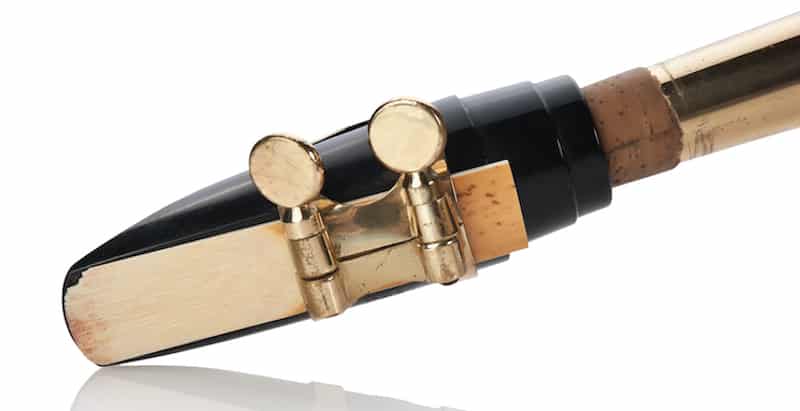
Saxophones are what we call a single Reed instrument.
Reeds are a thing piece of wood (usually bamboo) that sits on top of the mouthpiece and is what the musician blows over.
It’s actually the part that makes the sound as when the musician blows into the mouthpiece it causes the reed to vibrate and create the sound.
Saxophone reeds are rated from 1 to 5 and this number is describing how hard or soft the reed is.
Reeds with a lower rating are softer and higher numbers are harder and stiffer.
It’s usually recommended for beginner players to choose a softer reed (under 2.5) as they are easier to play and then more advanced players will opt for a harder reed.
The Ligature
The Ligature is a device that wraps around the mouthpiece and it’s responsible for holding the reed in place on the mouthpiece.
They are usually made out of metal but like the mouthpiece, they are made out of lots of different materials like plastic, leather, gold and even string.
The Neck (or Crook)
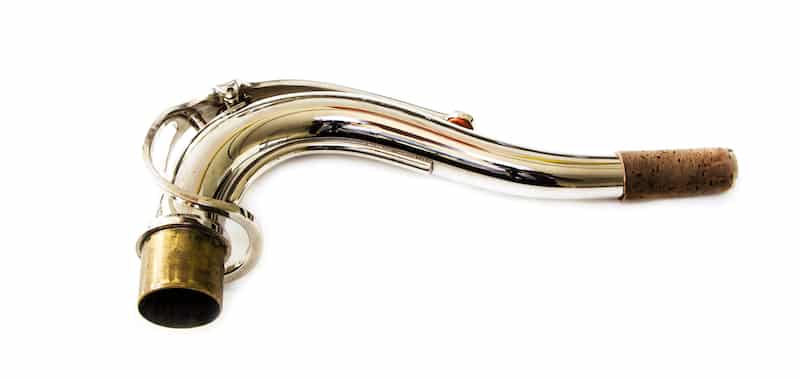
The next piece down the line when you assemble your sax is the Neck (also known as the Crook) which is the part that connects the mouthpiece to the body of the saxophone.
It is designed to fit inside the body of the saxophone on one end where it is held in place by a screw (called the Neck Screw) at the top of the body.
On the other end, you attach the mouthpiece to the neck which is held in place by the cork which we’ll look in next.
The Cork
The Cork as you can guess, is a piece of cork that the mouthpiece slides over to connect to the neck.
To attach the mouthpiece gently twist the mouthpiece back and forth as you push it over the cork.
You can also use some cork grease to lubricate it and make it easier to slide the mouthpiece up and down to tune the saxophone.
The Body
The Body of the saxophone is the brass tube that the air passes through as it’s blown into.
It contains all the keys, rods and pads that are used to change the pitch of the note that sounds.
Depending on what type of saxophone you have, the body can be straight, like a soprano saxophone, or have a curve at the bottom like the also, tenor and baritone saxophones.
The Keys
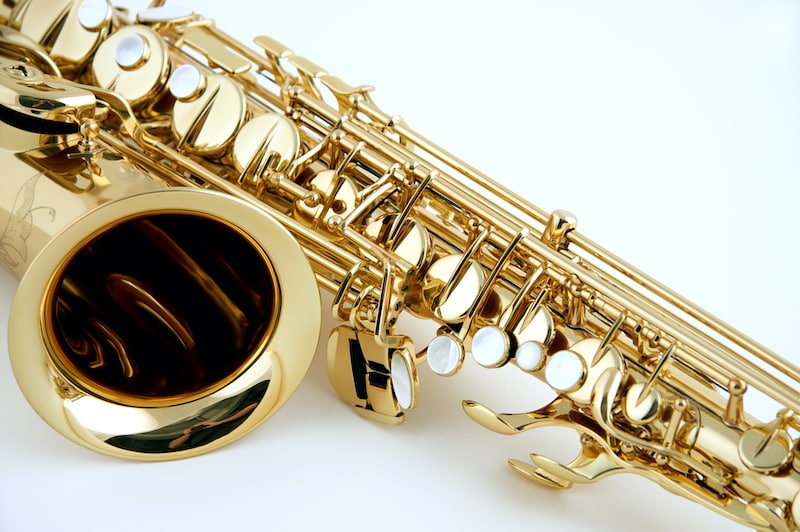
The modern saxophone has 23 keys which includes the six pearl keys on the front, the palm keys operated by your left hand, and the keys operated by both pinkies.
Each corresponds to a tone hole on the instrument that is either sealed or opened to change the pitch depending on the combination of keys that are pressed down.
The more keys pressed down, the further the air has to travel down the saxophone which lowers the pitch.
Key Guards

The Key Guards appear on the bell and elbow of the saxophone and are there to protect the keys housed under them.
On more advanced saxophone models, the key guards are usually engraved with an intricate design.
The Octave key
The Octave key is the key on the back of the horn above the thumb rest that you operate with your left thumb.
When the octave key is depressed, it causes the tone hole on the neck to open, taking whatever note is being played up an octave.
This key is also used when you are playing in the altissimo, or extreme upper, range.
Thumb Rest and Hooks
To counterbalance the horn while you are holding it, there is the Thumb Rest.
This is the protruding shelf coming off the bottom of the horn on the back.
It is curved, making it comfortable to support the horn with your right thumb.
Just above the thumb rest is a circular hook which is where you will attach the neck strap.
Just about every saxophone player uses a neck strap to hold their instrument in place.
The Elbow
The Elbow or Bow is the curved section at the bottom of alto, tenor, and baritone saxophones, basically any curved sax.
This is the most common part of the saxophone to get dented, so be sure to be careful of this part of the sax when you are carrying your horn around.
If it gets dented, it can have a drastic effect on the playability and intonation of your saxophone, making it less fun to play.
The Bell
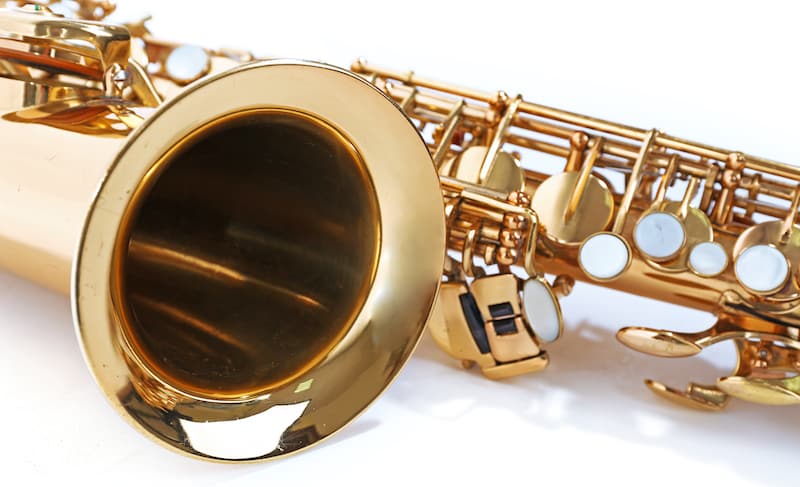
The flared part of the horn at the end is called the Bell.
It does house a few of the keys that play lower notes, but its main function is to project the sound from the horn and stabilize the note.
Different saxophone models have different sized bells, so consider what kind of bell you want before making your purchase.
Summing up the Saxophone’s Parts
That’s it for our article on all the saxophone’s parts, we hope it helps make a bit more sense of where everything is and why it’s there.
As you can see, the saxophone is quite a complicated instrument in terms of its design but the good thing is that each type is very similar and once you know how to play one, you can get up and running on another quickly.

